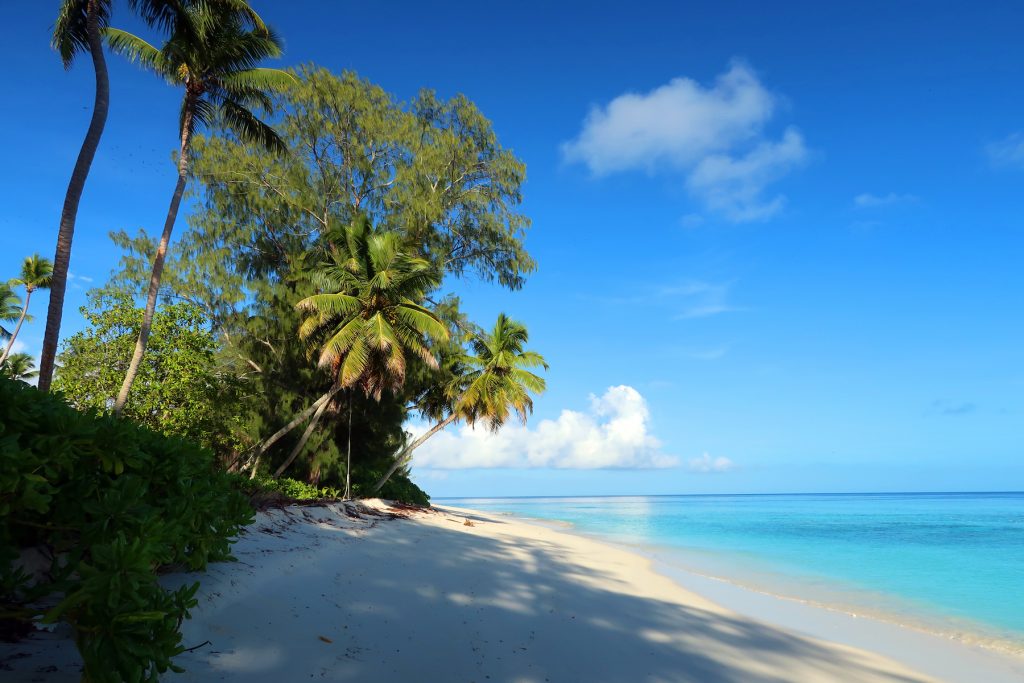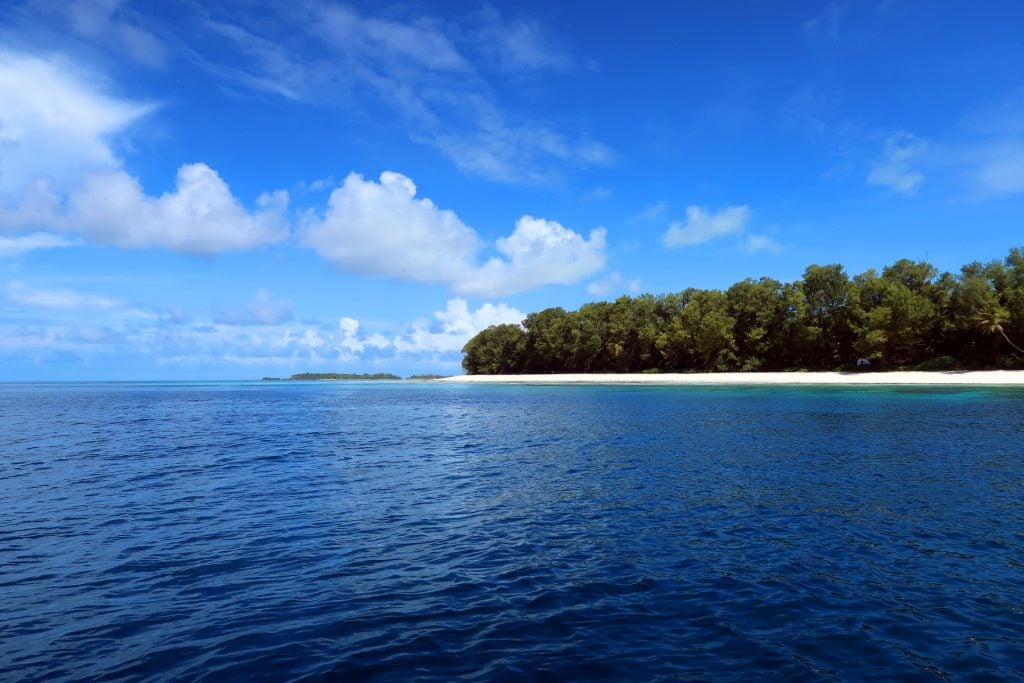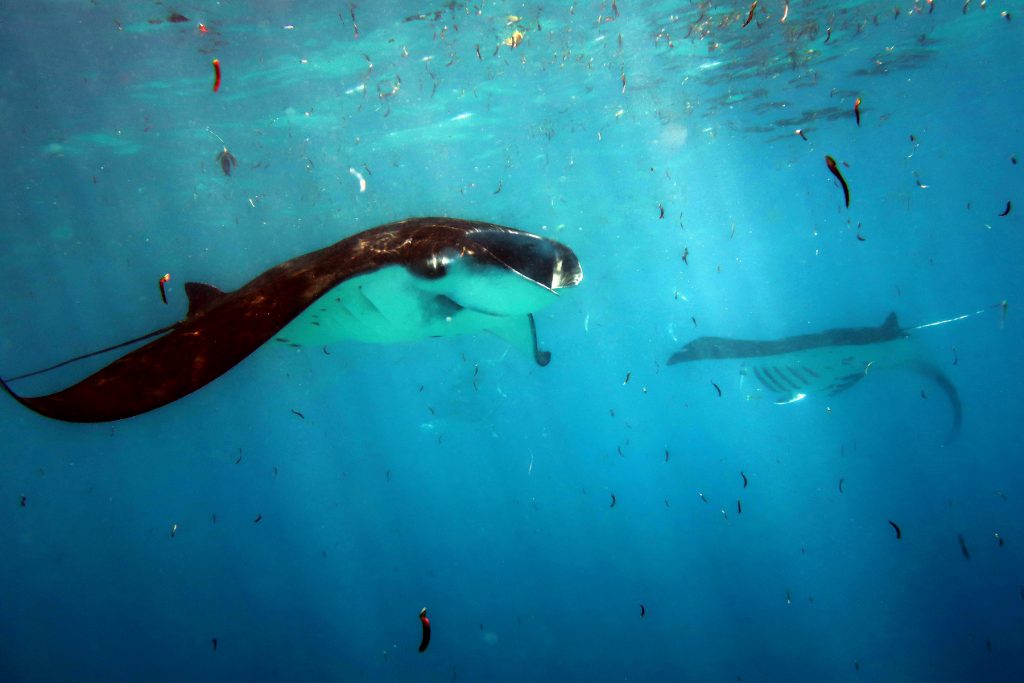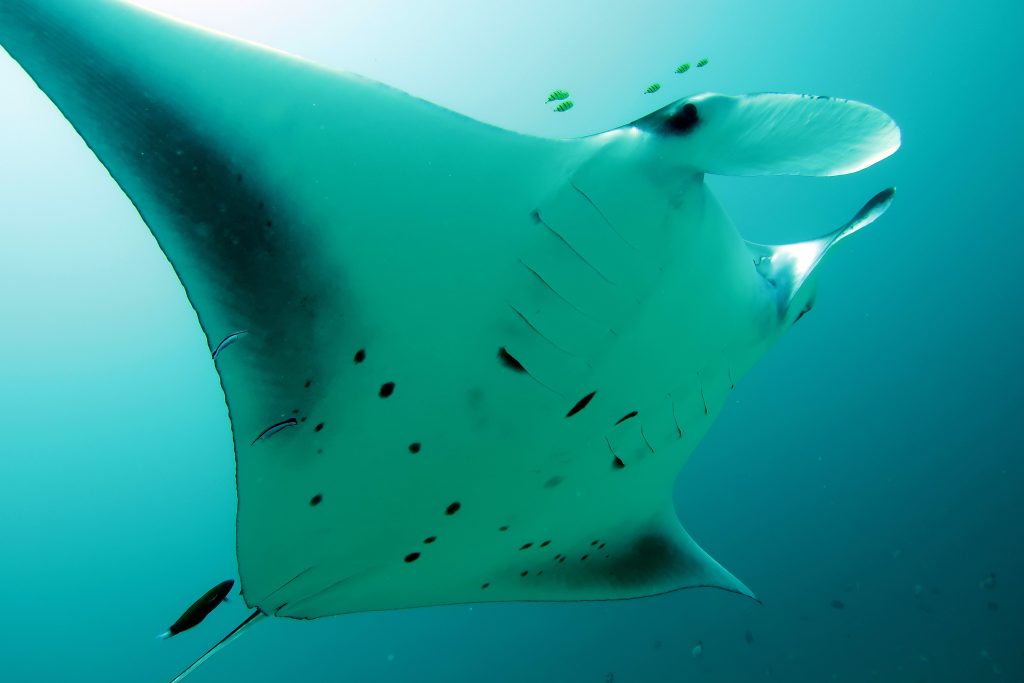May every day be a Manta-Day
Sitting on one of the stunning beaches of D’Arros Island and looking out over the crystal clear blue water, it’s hard to believe I have already been here for 12 days. After months of planning, paperwork, and organising equipment, I am finally back again for the 2017 Seychelles Manta Ray Project (SMRP) field trip and I am loving every single second of it! When I left on this adventure at the end of October, I told many people that I would be posting frequent updates on social media about the trip…oops. So here is the update post that I probably should have written a week ago, but didn’t because we were too busy science-ing with the incredible reef manta rays of Seychelles.

Another beautiful start to a Manta-Day at D’Arros Island. Photo by Lauren Peel | © Save Our Seas Foundation
Two of the main goals of this SMRP trip to D’Arros Island are to continue to monitor the local manta ray population through photo-ID, and to deploy 3 satellite tags on reef manta rays to study their wide-ranging movement patterns throughout Seychelles. To do this requires a lot of time and patience both on and in the water, but I can’t help but spend each day with a smile on my face knowing that my office looks like this:

The view as we begin an Island Survey around D’Arros Island. Photo by Lauren Peel| © Save Our Seas Foundation
A typical Manta-Day at D’Arros Island involves two kinds of surveys; an Island Survey and a Cleaning Station Survey. Firstly, the research team uses the research vessel – Sicklefin – to circumnavigate D’Arros Island in the search for mantas, noting the time and location of all sightings before photographing each individual and recording their behaviours. The mantas that we encounter on these surveys are usually found feeding on plankton at the surface – often in chains of 2-3 individuals – but occasionally we see many more than this. In early November, we broke the record for the most manta rays ever ID’ed on a single morning with 27 individuals photographed! It was an incredible data-filled day, and I will never forget the feeling of being surrounded by these graceful giants.

Amongst the floating sea grass, two reef manta rays feed on plankton at D’Arros Island. Photo by Lauren Peel | © Save Our Seas Foundation
Once we have completed the Island Survey, our team then shifts our efforts underwater – travelling to the manta cleaning station to the north of D’Arros Island on SCUBA and waiting to see which mantas arrive for a clean after the morning feed. As the mantas glide in over the reef and hover effortlessly while small cleaner fish search for morsels of parasites from around their mouth and gills, we are provided with a unique opportunity to identify each individual and to study their behaviour and interactions with each other. This is also when we get our chance to deploy our satellite tags which will reveal how widely these animals are travelling from D’Arros Island and throughout Seychelles; information that is critical to protecting this vulnerable species long into the future.

Manta #115 arrives at the cleaning station with an escort of juvenile golden trevally. Photo by Lauren Peel | © Save Our Seas Foundation
To date on this trip, we have:
- Recorded 83 manta sightings
- Identified 6 new individuals
- Deployed 0/3 satellite tags
With another 17 exciting days left in this tropical paradise still to come!
